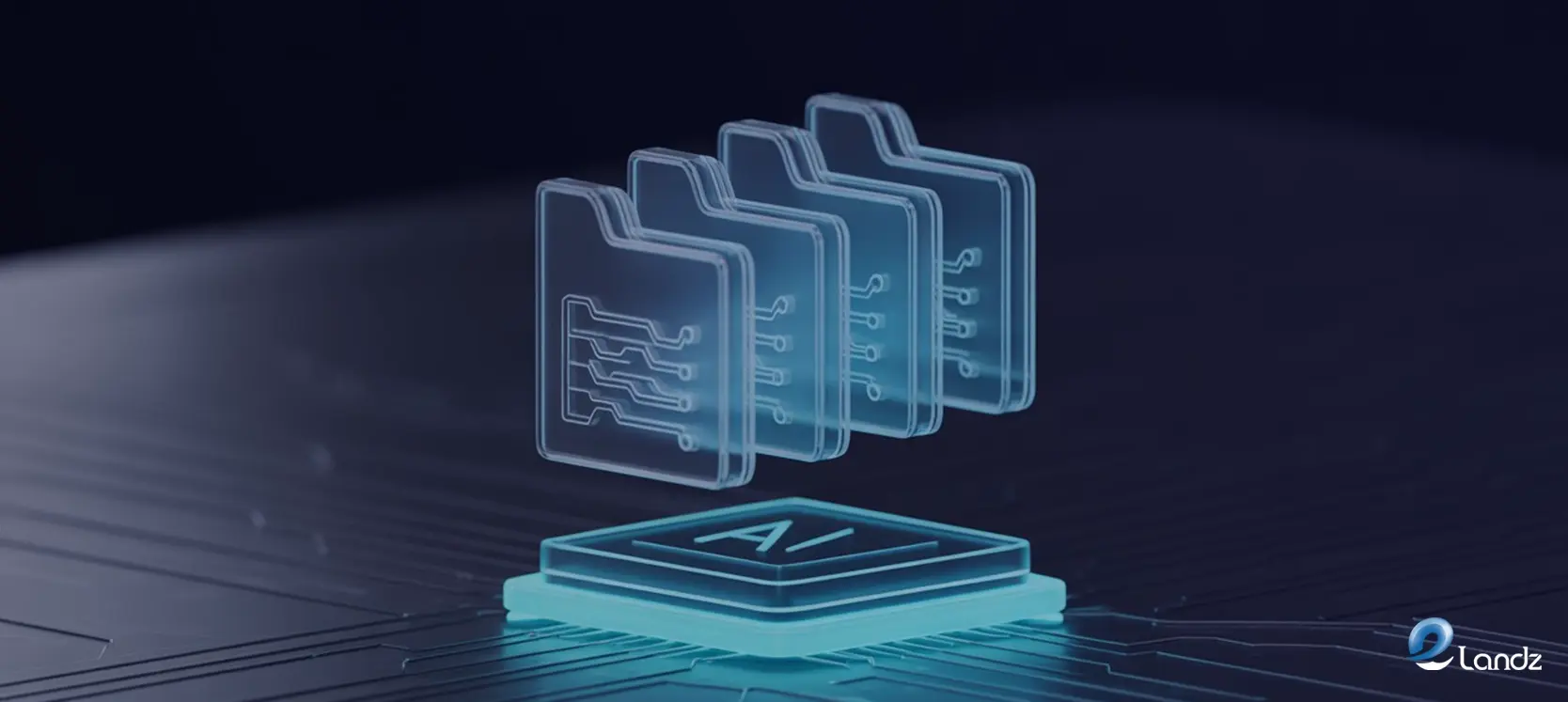
How Fast Can AI Process Data? Here’s the Answer
12 Oct 2025Introduction
How fast can AI process data? The speed at which information can be analyzed has become a critical factor in modern business and technology. Traditional computing methods are being replaced by artificial intelligence systems that can handle massive amounts of information in remarkably short timeframes.
Understanding AI Data Processing Speed
Modern AI systems powered by specialized hardware can complete tasks in microseconds that would take traditional computers hours or even days to finish. This dramatic improvement is achieved through parallel processing capabilities and optimized algorithms specifically designed to handle large-scale data operations. The processing speed is measured through latency and throughput metrics that demonstrate extraordinary capabilities.
Real-world applications showcase these impressive speeds across various sectors. Financial institutions now detect fraudulent transactions within two milliseconds of occurrence, while telecommunications systems perform trillions of routing calculations in just ten seconds. Such rapid response times were previously impossible with conventional computing methods that could only handle information sequentially.
Key Speed Metrics
Latency refers to the time taken to complete a single operation and is often measured in milliseconds or microseconds. Throughput indicates the volume of data processed within a given timeframe, typically measured in terabytes or petabytes per hour. These measurements help organizations understand their AI system capabilities and identify areas for improvement.
Hardware Acceleration Impact
Graphics Processing Units have become the backbone of high-performance AI operations by managing thousands of calculations simultaneously. Unlike traditional processors that handle tasks one at a time, GPUs deliver performance improvements of up to 150 times compared to standard approaches. This architecture enables AI systems to break down complex tasks into smaller components for concurrent handling.
Processing Speed Across Different Data Types

How fast can AI process data? The speed varies significantly depending on the type of information being analyzed. Structured numerical data, such as financial transactions or sensor readings, can be handled extremely quickly because it follows predictable patterns. Visual data processing has seen remarkable advances, with image recognition systems now analyzing thousands of photographs per second.
Text analysis requires more computational effort than simple numerical calculations due to contextual complexity. Despite this challenge, modern AI systems can analyze thousands of documents per minute, extracting relevant information and identifying patterns. When examining how fast AI can process data in audio applications, speech recognition operates at speeds enabling real-time transcription and translation.
Visual and Video Analysis
Image recognition systems identify objects, people, and anomalies with high accuracy at production line speeds. This capability is utilized in manufacturing quality control, where products are inspected without causing operational delays. Video analysis combines visual and temporal challenges, requiring systems to examine multiple frames per second while tracking objects across time.
Audio and Text Processing
Natural language processing systems must understand context, grammar, and meaning when analyzing written content. Sound waves are converted to text with language understanding algorithms applied fast enough to match natural human speech patterns. Advanced systems now handle high-definition video streams in real-time, enabling applications like autonomous driving and surveillance.
Industry Applications and Speed Benchmarks
Practical implications of AI processing speed become clear when examining specific industry applications. In telecommunications, routing optimization systems coordinate technician schedules and service calls through solutions that now complete in just ten seconds rather than hours.
Financial Services Speed
Financial organizations handle over eight billion transactions per year while detecting fraud patterns within two milliseconds. This rapid analysis is achieved through specialized models that adapt and learn from new data continuously. The system delivers a 50-times improvement over traditional configurations while maintaining high accuracy standards.
Energy Sector Applications
Smart grid systems handle thousands of data points per second from individual electricity meters. This instant analysis enables utilities to balance supply and demand dynamically by completing operations at the network edge. Response times have been reduced from minutes to seconds, allowing for better grid management and reliability.
Healthcare and Drug Discovery
Biological databases containing millions of relationships between genes, proteins, and diseases are examined in seconds. Researchers quickly identify potential treatment targets from thousands of possibilities, significantly compressing development timelines. Tasks that previously took months are now completed almost instantly, enabling faster progress in medical research.
Factors Influencing Processing Performance
Multiple variables determine how fast AI can process data in any given scenario.
Simple algorithms that identify basic patterns execute extremely quickly, while sophisticated models capturing nuanced relationships require more computational resources. When evaluating how fast AI can process data, organizations that invest in modern infrastructure gain substantial speed advantages over competitors using legacy systems.
Network and Storage Factors
Network bandwidth and latency affect applications that rely on cloud-based systems. While edge computing eliminates these concerns by handling data locally, cloud-based systems must account for transmission time. Storage systems can also become bottlenecks when models need to access historical data during operations.
Software Optimization
Efficient code that takes full advantage of parallel capabilities delivers dramatically better performance. Specialized software libraries designed for AI operations provide significant speed improvements over general-purpose programming approaches. Model optimization techniques improve speed without significantly sacrificing accuracy for practical applications.
Overcoming Speed Limitations

Despite impressive advances, certain challenges can limit AI speeds in real-world deployments. Data transfer bottlenecks occur when information must move between different system components or across networks. These transfers can consume more time than the actual analysis, especially when working with very large datasets that must be transmitted over a distance.
Solutions to transfer bottlenecks include handling data where it is generated rather than moving it to centralized facilities. Edge computing approaches eliminate network latency entirely by running models on local devices. Smart meters, autonomous vehicles, and industrial sensors increasingly incorporate capabilities directly into edge hardware for immediate analysis.
Infrastructure Solutions
High-performance storage solutions that can retrieve information at speeds matching computational capabilities are essential. Organizations increasingly adopt storage architectures specifically designed for AI workloads that require rapid data access. Specialized hardware integration at the edge enables instant analysis without cloud connectivity requirements.
Algorithm Efficiency
Model pruning techniques that remove unnecessary parameters improve speed without sacrificing significant accuracy. Quantization methods that reduce computational precision offer another approach to optimization. These techniques are particularly valuable for applications running on devices with limited power or energy constraints.
Balancing Speed and Other Factors

To understand how fast AI can process data, you must also consider the tradeoffs involved in achieving maximum velocity. Faster operations often require more expensive hardware infrastructure, creating cost considerations for organizations. The business case for speed improvements depends on the value generated by faster insights and actions.
Accuracy sometimes decreases when models are optimized purely for speed through various compression techniques. Applications must carefully balance these factors based on their specific requirements and tolerance for reduced precision.
Questions about AI’s data processing capabilities should also account for energy consumption, which scales with computational power, though efficiency improvements have helped moderate this relationship over time.
Cost Considerations
Organizations must consider both direct electricity costs and the environmental impact of computing infrastructure. The most effective solutions optimize for velocity while maintaining reasonable energy consumption levels. Maintenance and operational complexity increase with sophisticated high-speed systems requiring specialized expertise.
Return on Investment
Total cost of ownership includes hardware expenses plus personnel and processes required for optimal performance. ROI calculations must account for specific benefits that faster operations deliver in each application. In some cases, improvements of seconds generate substantial value, while in others, existing speeds may already be sufficient.
Practical Business Implications
Organizations across all sectors can benefit from understanding AI capabilities for competitive advantage. Even small businesses can now access high-speed operations through cloud services without substantial capital investments. This democratization of technology enables companies of all sizes to leverage advanced analytics for business improvement.
Competitive advantages are increasingly determined by how quickly organizations can analyze and act on information. Companies that implement faster AI systems can respond to market changes more rapidly and optimize operations more effectively. Decision-making processes are fundamentally changed when analysis can be completed in seconds rather than days or weeks.
Operational Efficiency
Reduced equipment downtime through predictive maintenance delivers measurable benefits across industries. Optimized resource allocation and improved quality control all contribute to operational improvements. Customer experiences are enhanced when organizations can provide personalized, real-time responses to inquiries and needs.
Market Responsiveness
Organizations can test multiple scenarios, explore various strategies, and implement solutions more quickly than previously possible. This agility becomes particularly valuable in fast-moving industries where conditions change rapidly. The velocity differential between industry leaders and laggards continues to widen as technology advances.
Measuring Processing Performance
Nearly half (48%) of companies deploy some form of artificial intelligence to extract actionable value from their vast datasets.
Organizations must establish metrics to track operational performance effectively. Latency measurements indicate how quickly individual operations are completed, providing insight into responsiveness. Throughput metrics reveal how much data can be handled within specific timeframes for continuous operations.
Resource utilization tracking shows how effectively hardware capabilities are being used for optimization opportunities. Error rates must be monitored alongside velocity metrics to ensure optimization does not compromise reliability. Cost efficiency metrics compare operational speed against resource consumption and expenses for balanced performance.
Systems that fail to fully utilize available computational power indicate potential for optimization. Systems running at maximum capacity may require infrastructure upgrades to maintain performance as data volumes grow. Comprehensive monitoring tracks both performance and accuracy simultaneously.
Continuous Improvement
Regular monitoring helps organizations identify opportunities to improve efficiency without sacrificing necessary capabilities. The most effective systems deliver required performance at the lowest practical cost. Tracking trends over time reveals patterns that inform strategic infrastructure decisions and investments.
Future Processing Technologies
Emerging technologies promise to push speeds even further beyond current capabilities. Quantum computing could eventually enable certain types of calculations to be performed exponentially faster than possible with conventional hardware. Neuromorphic computing, which mimics biological neural networks, represents another frontier in speed development.
Advancements in chip design continue to deliver meaningful improvements with each generation. Specialized processors offer better performance and efficiency than their predecessors consistently.
Are you still wondering, “How fast can AI process data?” Well, there’s no limit to what will happen in the days to come. The combination of hardware and software improvements creates a multiplier effect that accelerates progress beyond what either domain could achieve independently.
FAQs
Check out this FAQ section!
How fast can AI process data compared to human analysis?
AI systems can analyze data thousands to millions of times faster than humans for tasks involving pattern recognition and numerical analysis. While a human analyst might need hours or days to review large datasets, AI can complete similar tasks in seconds or minutes.
What determines how fast AI can process data in real-world applications?
Processing speed is determined by multiple factors, including hardware capabilities, data volume and complexity, algorithm efficiency, and network infrastructure. The type of data being analyzed also matters significantly.
Can AI process data in real-time for immediate decision-making?
Yes, modern AI systems can process data in real-time for many applications. Financial fraud detection systems analyze transactions in under two milliseconds, while autonomous vehicle systems process sensor data continuously to make split-second navigation decisions.
How much faster is AI processing with GPUs compared to traditional CPUs?
GPU-accelerated AI processing can be 50 to 150 times faster than CPU-based systems for typical machine learning workloads, with some specific tasks showing improvements of over 1 million times. This dramatic speedup results from GPUs’ ability to perform thousands of calculations simultaneously, while CPUs process tasks sequentially.
Will AI processing speed continue to improve in the coming years?
Processing speeds are expected to continue improving through advances in specialized AI chips, software optimization, and novel computing architectures like quantum and neuromorphic systems. Historical trends show consistent performance improvements with each hardware generation, and significant research investments suggest this trajectory will continue.


